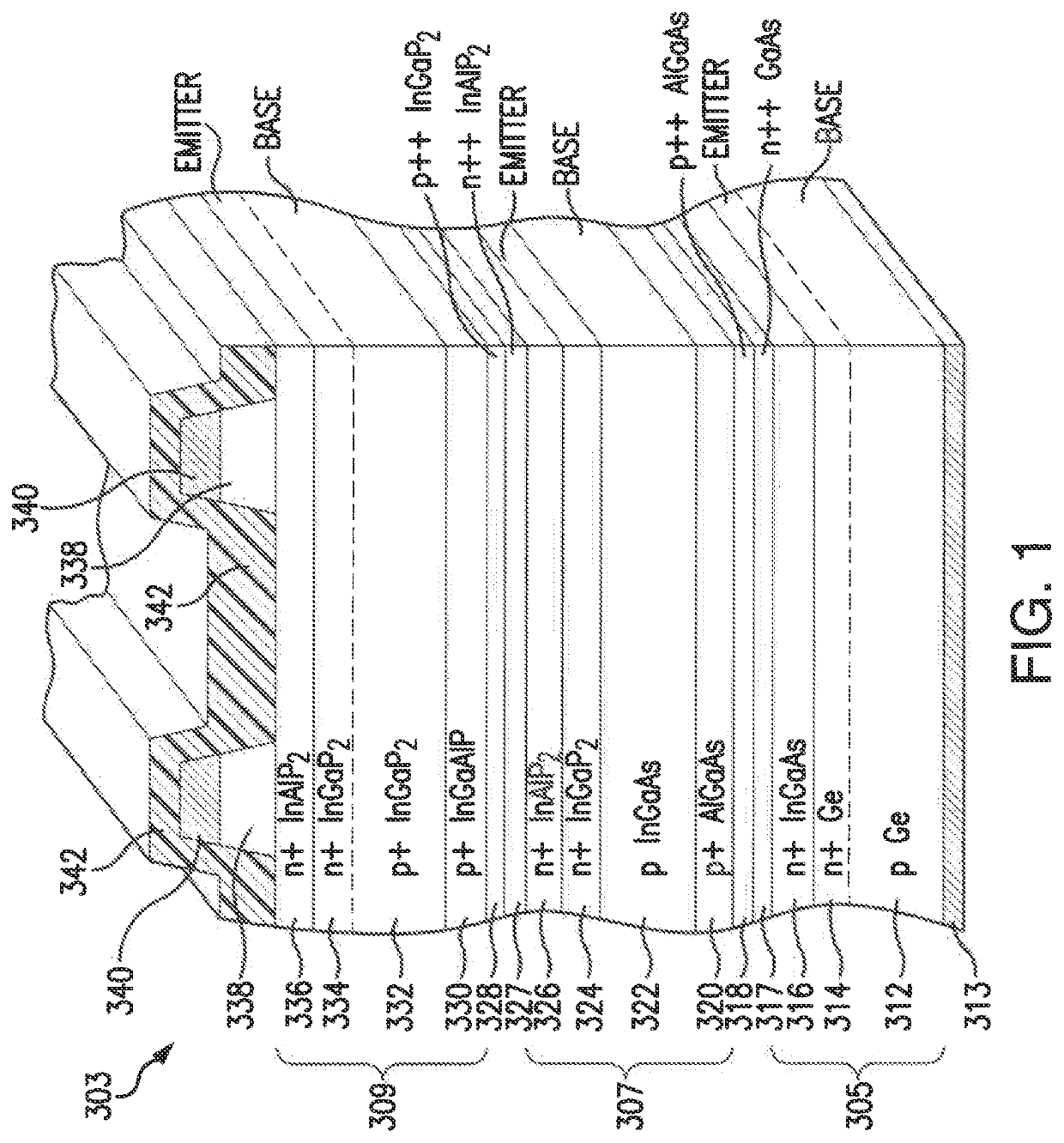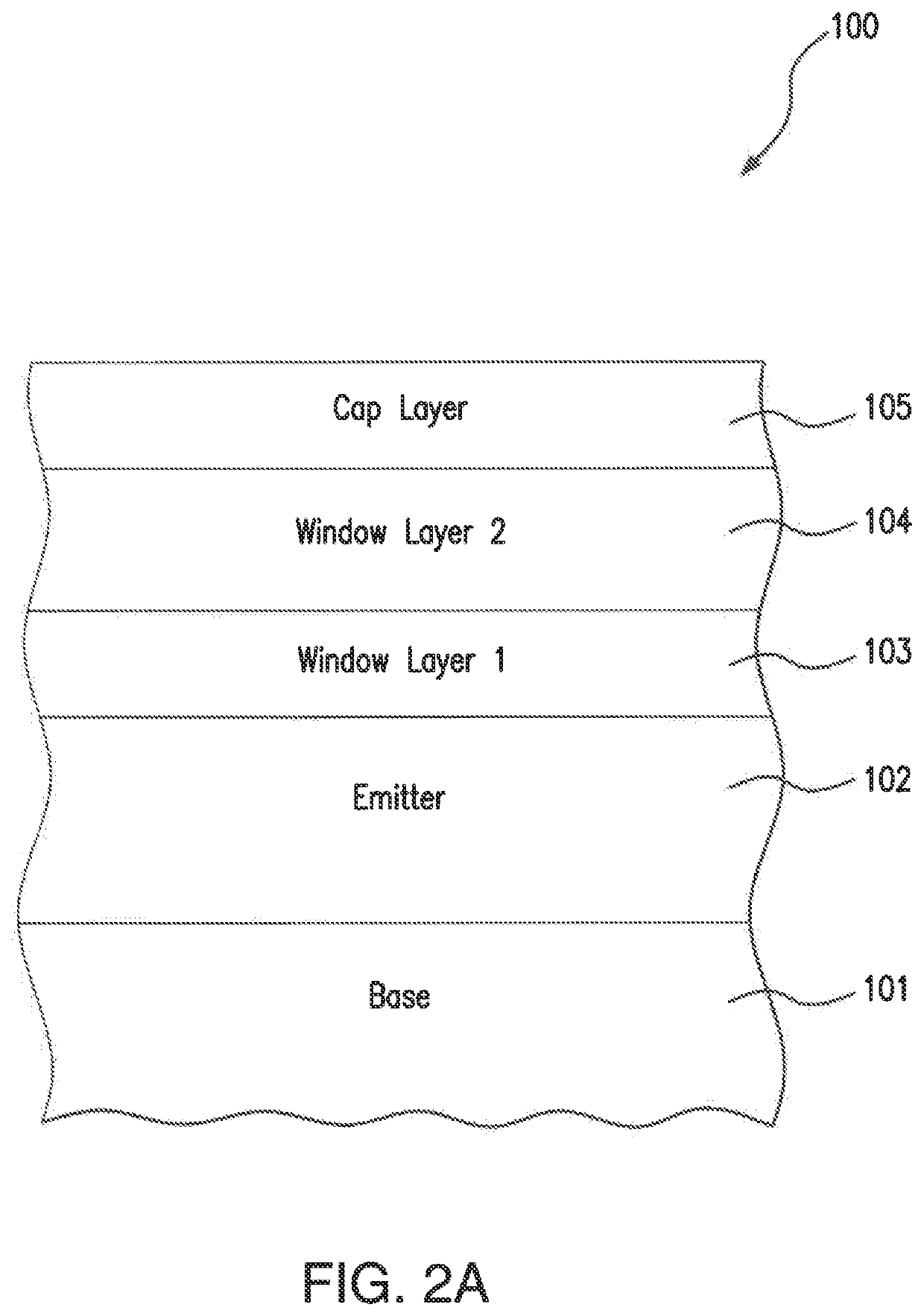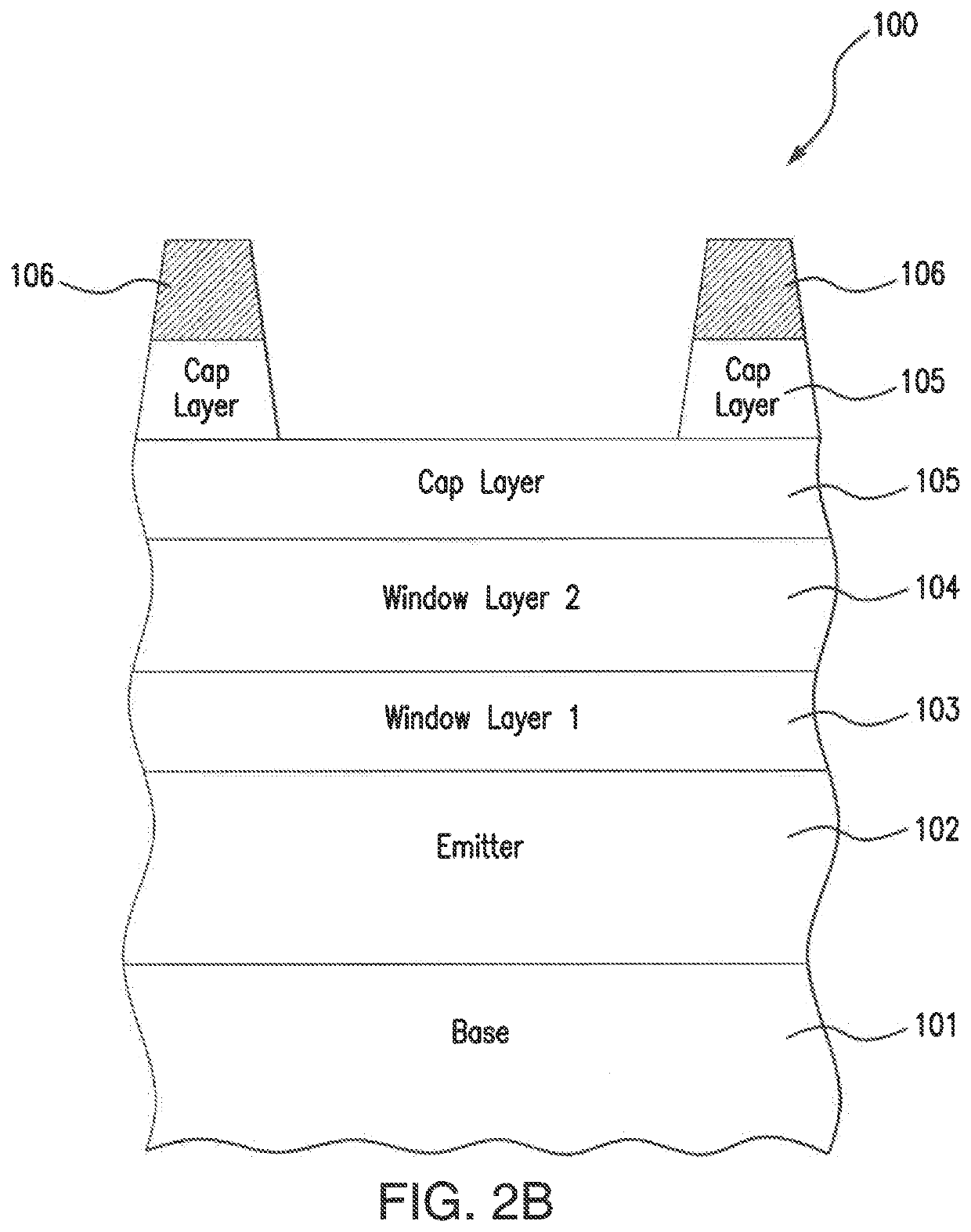Multijunction solar cell
a solar cell and multi-junction technology, applied in the field of solar cells and the fabrication of solar cells, can solve the problems of reducing the efficiency of photon conversion at the sub-cell, the overall efficiency of the solar cell, and the tensile complexity of the manufactur
- Summary
- Abstract
- Description
- Claims
- Application Information
AI Technical Summary
Benefits of technology
Problems solved by technology
Method used
Image
Examples
first embodiment
[0203]FIG. 3 is a highly simplified perspective view of a space vehicle incorporating a photoelectric power system according to the present disclosure. The space vehicle 500 includes a plurality of foldable substantially rectangular panels 501, 502, 503, 504, etc. which extend from the vehicle to form “wings”.
second embodiment
[0204]FIG. 4 is a highly simplified perspective view of a space vehicle incorporating a photoelectric power system with roll-out deployment according to the present disclosure. In this embodiment, the space vehicle 2000 incorporates a solar cell array 2004 mounted on a deployable flexible sheet 2003 in which the solar cell array 2004 incorporates the solar cells or solar cell modules according to the present disclosure.
[0205]The sheet 2003 may wrap around a mandrel 2002 prior to being deployed in space. One of the advantages of such an arrangement is that the storage volume in the launch vehicle for the solar cell array is relatively low, thereby enabling either an increased payload size or a smaller volume launch vehicle requirement. The space vehicle 2000 includes a payload 2005 which is powered by the array of solar cell assemblies 2004.
[0206]FIG. 5 is a graph representing the band gap at certain binary material and their lattice constants. The band gap and lattice constants of t...
PUM
 Login to View More
Login to View More Abstract
Description
Claims
Application Information
 Login to View More
Login to View More - R&D
- Intellectual Property
- Life Sciences
- Materials
- Tech Scout
- Unparalleled Data Quality
- Higher Quality Content
- 60% Fewer Hallucinations
Browse by: Latest US Patents, China's latest patents, Technical Efficacy Thesaurus, Application Domain, Technology Topic, Popular Technical Reports.
© 2025 PatSnap. All rights reserved.Legal|Privacy policy|Modern Slavery Act Transparency Statement|Sitemap|About US| Contact US: help@patsnap.com



